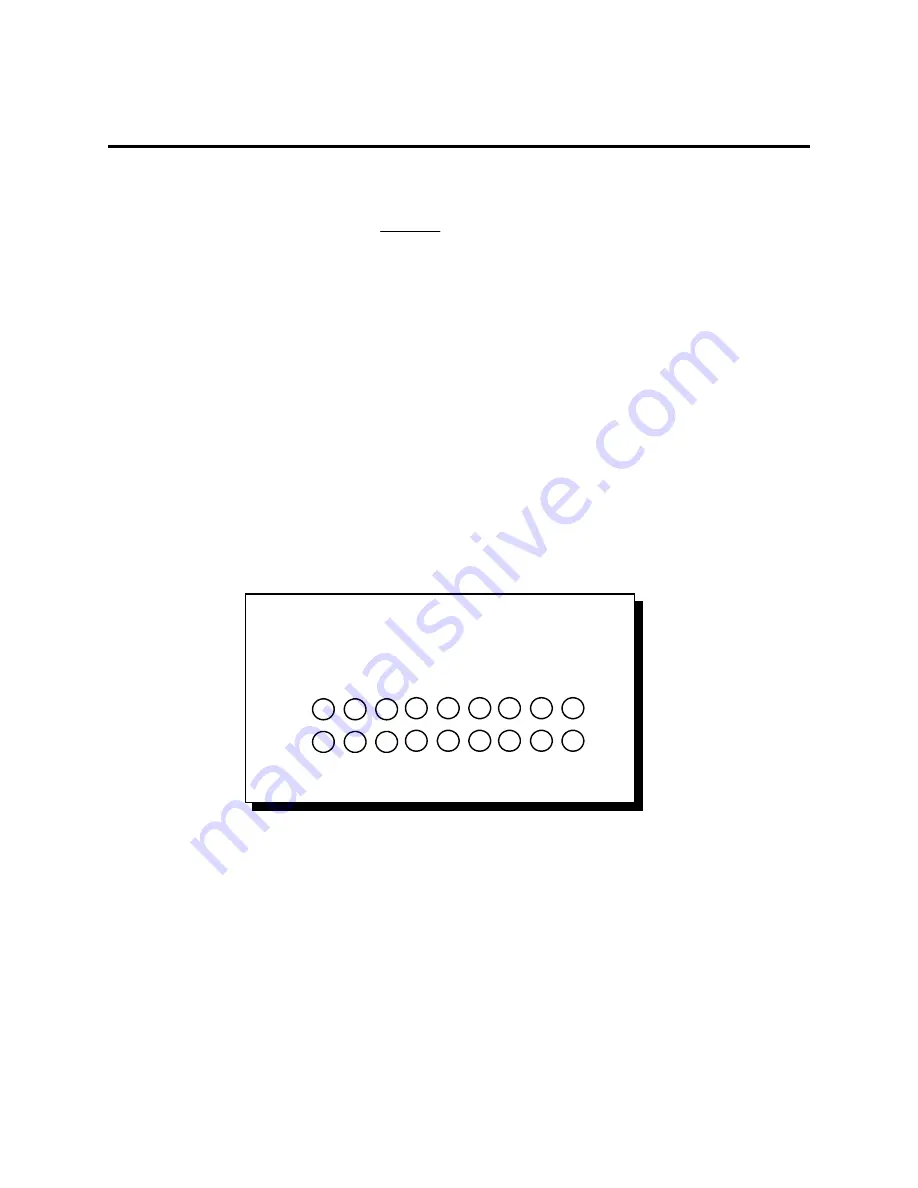
2 Hardware Configuration
The QSC(LP)-200/300 is automatically configured at boot time by the computer's BIOS
or operating system. There are no required switches or jumpers to set for installation.
This chapter lists a number of optional jumper settings that control various hardware
features. These jumpers, located in a row along the top of the board , control how signals are
routed from the UARTs to the connector, as well as special options.
Any changes from the factory default should be made before installing the
QSC(LP)-200/300 in the computer. These settings can also be changed in Device Manager
under Windows operating systems.
2.1 Signal Connections
The QSC(LP)-200/300 provides each of four serial ports with four differential signal
pairs: TxD, RxD, AUXOUT, and AUXIN. TxD and RxD are always present at the connector.
The AUXOUT and AUXIN signals can be used to support RTS/CTS handshaking, external
clocking, or external signal loopback. The factory default configuration, as shown in Figure 2
with no jumpers across any of the pins, is a loopback of AUXOUT to AUXIN at the connector,
with RTS and CTS looped back on the board. There is an extensive discussion of this topic in
section 6.
Jumper J1 defines the options for this card:
TG
L
1
AUX
1
TG
L
2
AUX
2
TG
L
3
AUX
3
TG
L
4
AUX
4
X8
2
1
3
5
1
7
1
9
11
13
15
17
4
6
8
10
12
14
16
18
J1
Figure 2 - Top Card Edge Jumpers
2.1.1 AUX(1,2,3,4) (pins 3 and 4, 7 and 8, 11 and 12, 15 and 16)
The 1, 2, 3, or 4 will designate which port the settings will be applied to. With NO
jumpers across the “AUX” pins, CTS = RTS and AUXIN = AUXOUT. With a jumper on any
of the “AUX” pins, CTS = AUXIN and AUXOUT = RTS for the given port
.
2.1.2 TGL(1,2,3,4) (pins 1 and 2, 5 and 6, 9 and 10, 13 and 14)
The 1, 2, 3, or 4 will designate which port the settings will be applied to. With NO
jumpers across the “TGL” pins, TXEN = 1. With a jumper on any of the “TGL” pins, TXEN
will be set to “Auto-Toggle” for the given port
.
Quatech QSC(LP)-200/300 User's Manual
6









































